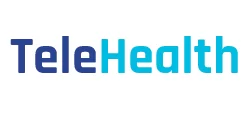I recently hosted an industry expert on one of our regular webinars. The topic was “Occupational Health and Safety amidst the COVID-19 pandemic”. We discussed many aspects of OHS and the response to one question intrigued me. The question that I posed was “Many OHS facilities (particularly on the mines) have large queues of miners early in the morning. These miners have to undergo periodic medical examinations which are mandatory for certification of fitness.
How can we prevent these long queues especially under COVID-19 where the risk of spreading the virus is higher”? My guest’s response was that whilst technology helps manage this (with predefined scheduling etc), these have not helped reduced queuing because this is the norm. He then went on to say we need to re-imagine OHS and find innovative ways to solve this problem. After the webinar, I thought about this and realised a solution can be found by applying Design Thinking.
What is Design Thinking?
Design Thinking is a process for solving problems by prioritizing the consumer’s needs above all else. It relies on observing, with empathy, how people interact with their environments and employ an iterative, hands-on approach to creating innovative solutions. By observing the individuals in the queues at the clinics, we take a “human-centered” approach to how consumers engage with a product or service, rather than how someone else or an organization thinks they will engage with it.
To be “human-centered”, designers watch how the miners use the service and continue to refine the service to improve the miner’s experience. This is an iterative process which is a key component of Design Thinking. In contrast, the traditional problem-solving process is linear i.e., Identify the problem and then brainstorm solutions.
The five stages of Design-Thinking Process
Design Thinking follows a five-stage framework. A summary of each step is described.
1. Empathize
In this stage, we would observe miners in the queues. These observations must be done with empathy which means withholding judgment and not imparting preconceived notions of what the consumer needs. This is crucial because it can uncover issues that the miner didn’t even know they had or could not verbalise themselves. From this point, it’s easier to understand the human need for which you are solving.
2.Define
In this stage, the observations are gathered from stage 1. This includes the difficulties and struggles faced by the miners in the queues. This will enable you to define the problem clearly.
3.Ideate
The next step is to brainstorm ideas about how to solve the problems that have been identified. This can be done in a group or individually. It is important to generate as many diverse ideas as possible. The result is a few ideas can be taken to the next stage of the process.
4.Prototype
This is the stage that turns ideas into an actual solution. Prototypes are not meant to be perfect. The point of a prototype is to come out quickly with a concrete version of the idea to see how it is accepted by miners.
5.Test
Once you give a prototyped solution to miners, you must observe how they interact with it. This testing stage is the one in which you collect feedback on your work. At the end of the fifth stage, you’ll likely have to go back to one or several of the other stages. The outcome may be that you have mis-defined the consumer’s needs. If so, you would have to return to an earlier stage of the process. By utilising a human-centred approach to solving this problem, we can improve processes as well as a multitude of many other problems. For more information




















